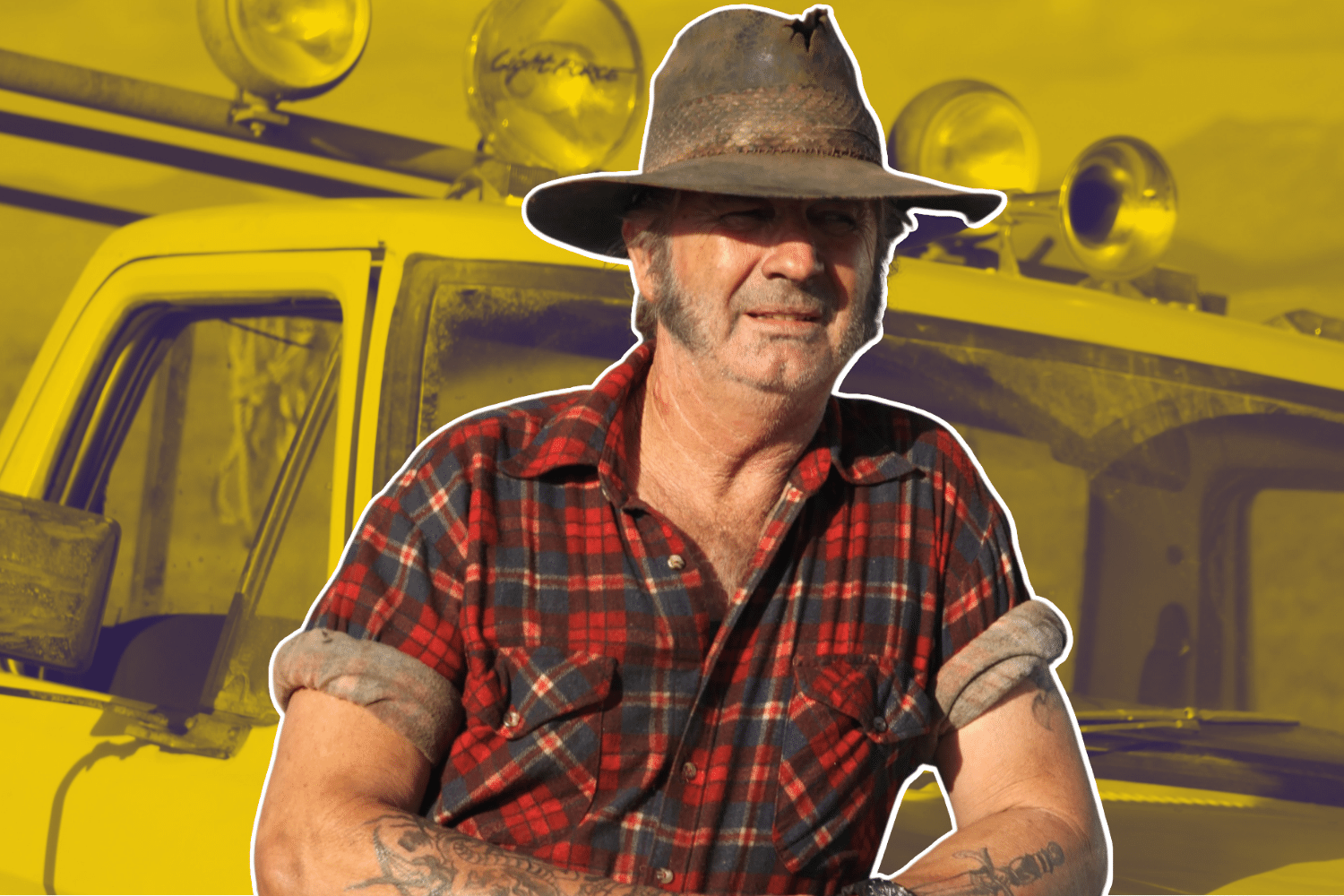Editorials
‘Wolf Creek 2’ is a Meta Ozploitation Classic
August 15th, 2022 | By Joanna Psaros

While Greg McLean’s Australian horror hit Wolf Creek wowed critics and audiences alike upon its 2005 release, the response to the film’s 2013 sequel was decidedly lukewarm. Suffering by comparison to its acclaimed predecessor, Wolf Creek 2 was more or less universally panned. RogerEbert.com, for example, dismissed the film as “markedly worse” and ineffective, while one reviewer went so far as to call it “a perfect encapsulation of everything that’s wrong with modern horror.”
Since the film sacrifices realism for visceral impact and leans into its Ozploitation roots, it’s true that Wolf Creek 2 is a very different beast to the gritty, documentary-style original. But if you have the stomach for high velocity gore, blacker than black humour, and extreme levels of Australian-ness, it’s high time you checked out this misunderstood nugget of Aussie outback gold.
Wolf Creek 2, loosely picking up where the first film left off, sees John Jarratt reprise his role of Akubra-clad pig hunter Mick Taylor alongside newcomers Rutger (Philippe Klaus), Katrina (Shannon Ashlyn), and Paul (Ryan Corr, Packed to the Rafters and Holding the Man) who play a couple of young German and British travellers respectively in another blood-soaked story of backpacking gone wrong.
Like Wolf Creek, the film claims to be based on true events. That may be stretching things slightly; the events depicted aren’t based off any actual criminal investigation, of which the film’s more extreme carnage would surely have warranted (it’s not every day you come across the charred remains of two state troopers burned alive in their own cop car just off the main highway). But the dangers of Australia’s some million square miles of desert to unprepared travellers is all too real.
“Every year, 30,000 people go missing across Australia,” a title card reads ominously in Wolf Creek 2’s opening scene. “Some are never found.” It’s no exaggeration. The figure, which exceeds the number of homicide, sexual assault, and armed robbery victims combined is confirmed by the Australian Institute of Criminology, as well as a number of high profile disappearances that have made headlines internationally over the past few decades.
And yes, many of these people were young overseas travelers, including the seven victims of the so-called “backpacker murders” of the early 1990s.
This real-life horror is masterfully imbibed to Wolf Creek 2’s cinematic DNA thanks to Toby Oliver’s inspired cinematography. Allowing the rural South Australian location to do the job for him, Oliver captures the outback’s vast seclusion with wide shots that linger on hazy horizons devoid of a single landmark. It’s all too easy to imagine the terror of being alone and stranded in this unforgiving environment while trying to outrun Australia’s most deadly predators: the locals.
Played by a famed former children’s entertainer of all things, the character of Mick Taylor undergoes a significant makeover from his cinematic debut this time around. It was this characterisation that attracted most criticisms upon the sequel’s release. But rest assured Mick Taylor 2.0 stands alone as a deadly Aussie icon on his own merits.
In Wolf Creek, Mick Taylor was like the shark in Jaws in that the less you saw of the monster, the more frightening it was; he doesn’t actually appear until almost halfway through the original film’s runtime. In Wolf Creek 2, he’s like the shark in Sharknado — there’s very little point to the film’s OTT concept when he’s not onscreen, chewing up scenery with a shit-eating grin. Ostensibly based on infamous serial killer Ivan Milat (of the aforementioned backpacker murders), Taylor seems to have more in common with a certain other character of Australian folklore also by the name of Mick. Both films are slyly peppered with Crocodile Dundee references from Mick’s iconic headwear to his catchphrases, much to the surrounding character’s own initial amusement and eventual horror (“That’s not a knife. This is a knife!” quotes Taylor as he goes for the kill, repeating his victim’s earlier quip about his broad accent).
Wolf Creek 2 dials up the derangement to a level of almost self-parody, making Mick slightly less menacing, but all the more self-aware, and resulting in some of the film’s biggest laughs. “That’ll do, pig,” he cackles in one scene, quoting from the 1996 Aussie classic Babe before breaking the leg of a police officer struggling to escape his grasp. Another meta moment, presumably aimed at shocked overseas audiences directly, sees Taylor gleefully running down a mob of Kangaroos in his six-wheeler and shouting, “Welcome to Australia, cocksucker!” Welcome to Australia, indeed.
As a native Australian myself, I should have mixed feelings about Mclean’s depiction of my homeland. On the one hand, the Wolf Creek franchise – there’s also been a television series, and a third feature film is slated for 2023 – injected much needed life into the Australian horror scene, which has since seen acclaimed releases such as Relic and The Babadook. On the other, it’s not exactly good marketing for Australia’s tourism industry. With its disconcerting allusions to real-life traveller disappearances, the slogan “Where the bloody hell are you?” takes on a whole new meaning.
Ultimately, Wolf Creek 2 doesn’t terrify quite like the first chapter — but nor does it try to. Instead, the film twists its chilling source material into a horror comedy with an edge sharper than Mick Taylor’s trusty hunting knife. Tourists, you’ve been warned.

